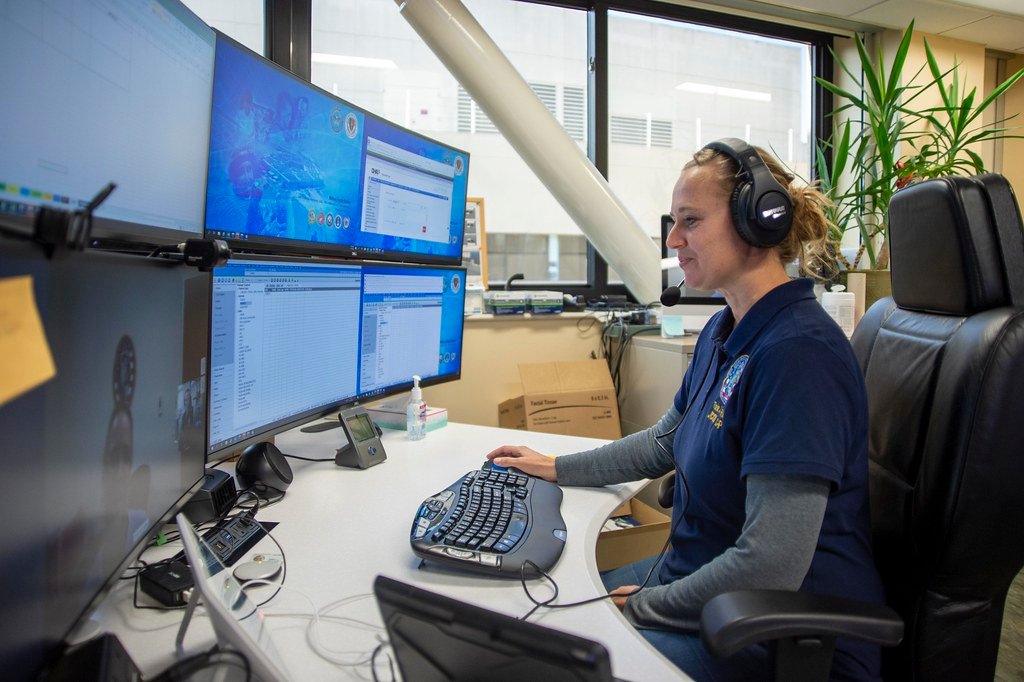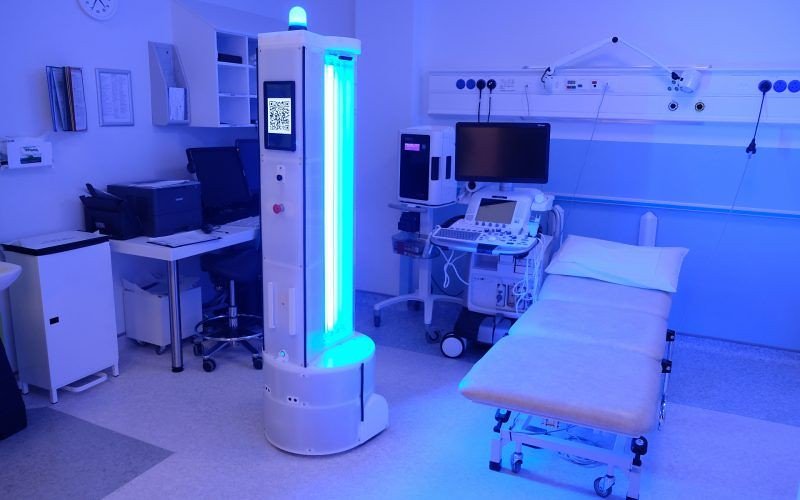Picture this: you’re living in rural Montana, 200 miles from the nearest specialist, and your grandmother needs urgent cardiac care. Just five years ago, this might have meant a grueling journey and precious time lost. Today, AI-powered telemedicine systems can connect her to world-class specialists in seconds, analyze her heart rhythms instantly, and potentially save her life without leaving home. This isn’t science fiction anymore—it’s happening right now across America, and state governments are leading the charge.
The Healthcare Access Crisis Driving Innovation

America faces a staggering healthcare access problem that affects millions of citizens daily. Rural areas struggle with physician shortages, with some counties having no doctors at all. Urban centers battle overcrowded emergency rooms and months-long wait times for specialists. The statistics are sobering: nearly 80 million Americans live in areas designated as having healthcare professional shortages. State governments have recognized that traditional solutions won’t cut it anymore, so they’re turning to artificial intelligence as their secret weapon. This technological revolution is reshaping how we think about healthcare delivery, making quality care accessible regardless of zip code.
California’s Revolutionary AI-Powered Emergency Response System

California has deployed an ambitious AI system that predicts and responds to medical emergencies before they spiral out of control. The state’s emergency medical services use machine learning algorithms to analyze 911 call patterns, traffic data, and hospital capacity in real-time. When someone calls for help, the AI instantly calculates the fastest route, predicts wait times at multiple hospitals, and even alerts medical teams about incoming patients. This system has reduced emergency response times by an average of 12 minutes statewide. For heart attack and stroke victims, those saved minutes literally mean the difference between life and death, brain damage and full recovery.
Texas Deploys AI Chatbots for Mental Health Crisis Intervention

Texas launched an innovative AI-driven mental health support system that operates 24/7 across the state’s vast geography. These sophisticated chatbots can recognize signs of depression, anxiety, and even suicidal ideation through text conversations with users. The AI doesn’t replace human therapists but serves as a crucial first line of support, especially in rural areas where mental health professionals are scarce. When the system detects serious mental health crises, it immediately connects users to human counselors or emergency services. Since implementation, the program has handled over 50,000 crisis interventions, with users reporting significant improvements in their mental health outcomes.
Florida’s AI-Enhanced Hurricane Health Preparedness

Florida’s unique geography makes it a testing ground for AI applications in disaster healthcare planning. The state uses predictive AI models to anticipate healthcare needs during hurricane season, analyzing weather patterns, population density, and historical health data. These systems can predict which hospitals will be overwhelmed, which medications will be in short supply, and where temporary medical facilities should be established. During Hurricane Ian in 2022, Florida’s AI system accurately predicted medication shortages three days before landfall, allowing officials to pre-position supplies. The technology has transformed disaster response from reactive scrambling to proactive, life-saving preparation.
New York’s AI-Driven Health Equity Initiative

New York State has implemented an groundbreaking AI system designed to address healthcare disparities in underserved communities. The technology analyzes social determinants of health—like housing quality, food access, and transportation—to identify residents at highest risk for health complications. AI algorithms then coordinate with community health workers to provide targeted interventions before problems become emergencies. The system has identified over 15,000 high-risk individuals in its first year, connecting them with preventive care that traditionally would have been impossible to coordinate. This proactive approach has reduced emergency room visits by 23% in participating communities.
Ohio’s Telemedicine AI Revolution in Rural Areas

Ohio faced a brutal reality: many rural counties had no specialists within 100 miles, forcing residents to travel hours for basic care or go without. The state’s solution involved deploying AI-enhanced telemedicine platforms that can perform preliminary diagnoses and triage patients effectively. These systems use computer vision to analyze medical images, natural language processing to understand patient symptoms, and machine learning to suggest treatment protocols. Rural clinics now operate like extensions of major medical centers, with AI providing the expertise that used to require physical presence. Patient satisfaction scores have soared, and the system has prevented thousands of unnecessary emergency room visits.
Arizona’s AI-Powered Prescription Drug Monitoring

Arizona tackled its opioid crisis head-on with an AI system that monitors prescription patterns and identifies potential abuse before it becomes addiction. The technology analyzes prescribing patterns, patient histories, and behavioral indicators to flag concerning trends. When the AI detects red flags—like doctor shopping or unusual prescription combinations—it alerts healthcare providers and state officials immediately. This system has reduced opioid-related overdoses by 18% since implementation while ensuring patients with legitimate pain management needs still receive appropriate care. The AI has also identified prescription fraud rings that human oversight missed, saving the state millions in healthcare costs.
The Technology Behind These Healthcare Transformations

The AI systems transforming state healthcare rely on several cutting-edge technologies working in harmony. Machine learning algorithms process vast amounts of patient data to identify patterns humans might miss. Natural language processing enables AI to understand medical records, patient complaints, and doctor notes written in everyday language. Computer vision technology can analyze medical images like X-rays and MRIs with accuracy matching or exceeding human radiologists. These technologies don’t work in isolation—they’re integrated into comprehensive platforms that learn and improve with every interaction. The result is AI that becomes more accurate and helpful over time, constantly evolving to serve patients better.
Breaking Down Geographic Barriers to Specialist Care

One of AI’s most transformative impacts has been eliminating the tyranny of distance in healthcare access. Patients in remote areas can now receive specialist consultations that previously required traveling hundreds of miles. AI-powered diagnostic tools can perform preliminary screenings and send results to specialists anywhere in the world. Remote monitoring devices connected to AI systems can track patient vital signs and alert doctors to changes that require immediate attention. This technology has been particularly revolutionary for elderly patients and those with chronic conditions who previously faced impossible choices between their health and their geographic constraints.
Reducing Healthcare Costs Through Predictive Analytics

State governments are discovering that AI doesn’t just improve healthcare access—it dramatically reduces costs too. Predictive analytics can identify patients likely to develop expensive complications, allowing for preventive interventions that cost pennies compared to emergency treatments. AI systems can optimize hospital staffing, reduce equipment waste, and streamline administrative processes that traditionally consumed enormous resources. Emergency room visits, which can cost thousands of dollars, are being prevented through AI-driven early interventions costing hundreds. These savings allow states to reinvest in expanding healthcare access to even more underserved populations.
AI’s Role in Addressing Healthcare Professional Shortages

America’s healthcare worker shortage has reached crisis levels, but AI is helping stretch existing resources further than ever imagined. AI assistants can handle routine tasks like appointment scheduling, medication reminders, and basic health education, freeing healthcare workers to focus on complex patient care. Diagnostic AI can perform initial patient assessments, allowing doctors to see more patients efficiently. AI-powered training systems are even helping train new healthcare workers faster and more effectively. While AI will never replace human healthcare providers, it’s multiplying their impact and making their expertise accessible to far more patients.
Privacy and Security Challenges in Healthcare AI

Implementing AI in healthcare raises significant privacy and security concerns that state governments must navigate carefully. Patient health data is among the most sensitive information imaginable, and AI systems require vast amounts of this data to function effectively. States are investing heavily in cybersecurity measures, encryption technologies, and access controls to protect patient information. They’re also developing new policies about data sharing, patient consent, and AI decision-making transparency. The challenge is balancing the tremendous benefits of AI-driven healthcare with the fundamental right to medical privacy.
Training Healthcare Workers for the AI Revolution

The success of AI in healthcare depends largely on how well healthcare workers can integrate these new tools into their practice. State governments are investing millions in training programs that teach doctors, nurses, and technicians how to work alongside AI systems effectively. These programs cover everything from interpreting AI-generated diagnoses to understanding when human judgment should override AI recommendations. Healthcare workers are learning to become AI collaborators rather than competitors, using technology to enhance their clinical expertise. The most successful programs treat AI as a powerful assistant that amplifies human capabilities rather than replacing them.
Measuring Success: Health Outcomes and Patient Satisfaction

State governments are rigorously tracking the impact of their AI healthcare initiatives through comprehensive metrics and patient feedback. Emergency response times, diagnostic accuracy rates, patient survival statistics, and healthcare cost reductions provide quantitative measures of success. Patient satisfaction surveys reveal how AI is improving the actual healthcare experience from the patient’s perspective. Early results are overwhelmingly positive: faster diagnoses, reduced travel burdens, improved health outcomes, and higher patient satisfaction scores. These metrics are driving continued investment in AI healthcare technologies and expansion to additional underserved areas.
Overcoming Implementation Challenges and Resistance

Rolling out AI healthcare systems hasn’t been without obstacles, and state governments have learned valuable lessons from early challenges. Technical integration with existing hospital systems proved more complex than anticipated, requiring significant infrastructure upgrades. Some healthcare providers initially resisted AI tools, fearing job displacement or questioning AI reliability. Rural communities sometimes lacked the internet connectivity necessary for AI-powered telemedicine. States have addressed these challenges through targeted funding, extensive training programs, infrastructure investments, and gradual implementation strategies that build confidence over time.
The Economic Impact of AI Healthcare Initiatives

Beyond improving health outcomes, AI healthcare systems are generating significant economic benefits for state economies. Reduced healthcare costs free up state budget resources for other critical priorities like education and infrastructure. Improved population health means more productive workforces and reduced sick days. The technology sector jobs created by these initiatives attract high-skilled workers and investment to participating states. Rural areas particularly benefit as AI-enabled healthcare makes these communities more attractive to residents and businesses. The economic multiplier effect of better healthcare access ripples through entire state economies.
Future Expansion Plans and Emerging Technologies

State governments are already planning ambitious expansions of their AI healthcare programs based on early successes. Upcoming technologies like quantum computing could revolutionize drug discovery and personalized medicine at the state level. Advanced AI models are being developed to predict and prevent disease outbreaks before they start. Virtual reality integrated with AI could provide immersive medical training and therapy experiences. States are also exploring AI applications in areas like nutrition counseling, addiction treatment, and elderly care. The next five years promise even more dramatic transformations in how states deliver healthcare to their citizens.
Collaboration Between States and Federal Agencies

Individual state AI healthcare initiatives are becoming part of a larger national effort to transform American healthcare delivery. States share successful AI models and best practices through federal coordination programs. The CDC collaborates with state AI systems for disease surveillance and outbreak prediction. Medicare and Medicaid agencies are adapting their policies to support AI-enhanced care delivery. This collaboration multiplies the impact of individual state investments while ensuring consistent quality standards across different AI healthcare systems. The federal-state partnership is accelerating AI adoption and making successful models available to more Americans faster.
Patient Stories: Real Lives Changed by AI Healthcare

Behind every statistic and system upgrade are real people whose lives have been fundamentally improved by AI healthcare initiatives. Maria, a diabetic grandmother in rural Texas, now receives daily AI-powered health monitoring that has prevented three potential medical emergencies. James, a veteran in Arizona struggling with PTSD, found help through an AI mental health system when human counselors weren’t available. These personal stories highlight how technology serves humanity, making abstract concepts concrete and demonstrating the profound human impact of government innovation. Each successful AI intervention represents not just improved healthcare access, but restored hope and enhanced quality of life for real families.
State governments across America are proving that artificial intelligence isn’t just a futuristic concept—it’s a present-day solution to healthcare’s most pressing challenges. From California’s emergency response systems to Arizona’s prescription monitoring, these initiatives are saving lives, reducing costs, and bringing world-class medical care to previously underserved populations. The early results are so promising that other states are rapidly adopting similar programs, creating a nationwide transformation in healthcare delivery. As these systems continue to evolve and improve, they’re not just changing how we receive healthcare—they’re redefining what’s possible when technology serves humanity’s most fundamental needs. What other impossible healthcare challenges might AI help us solve next?




